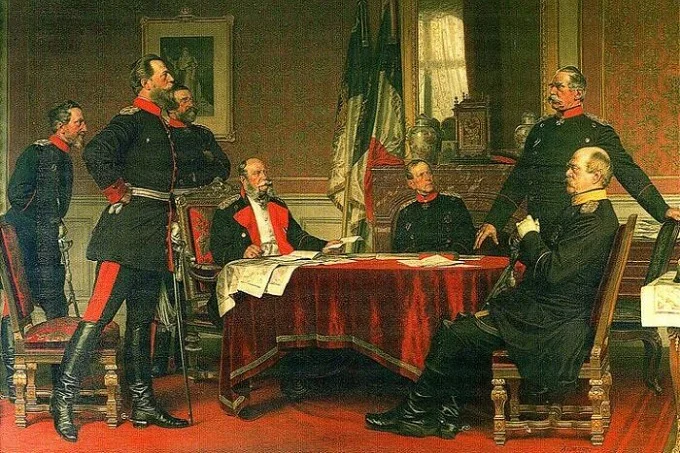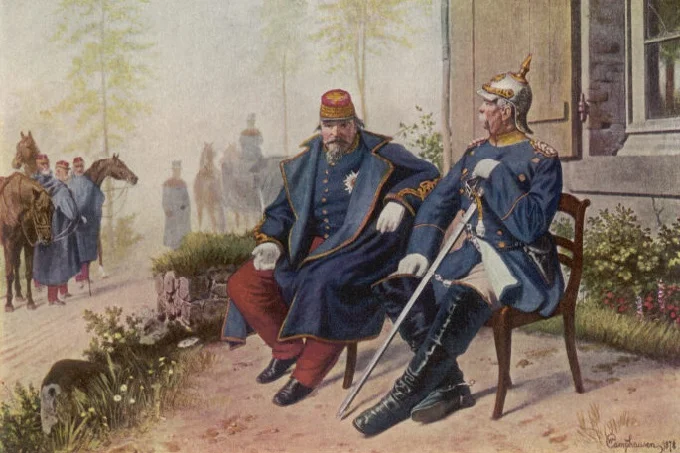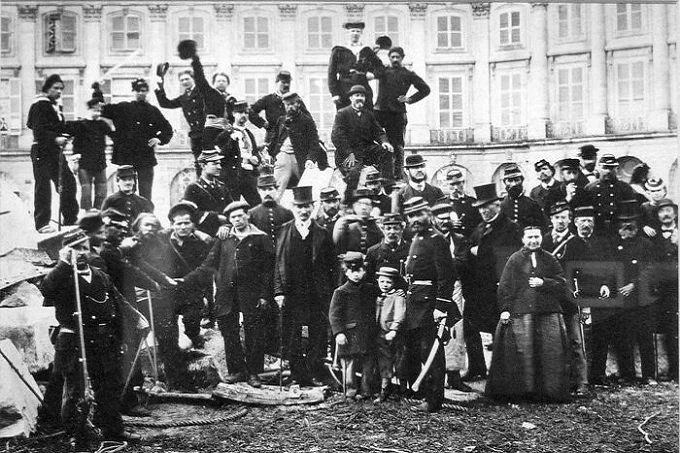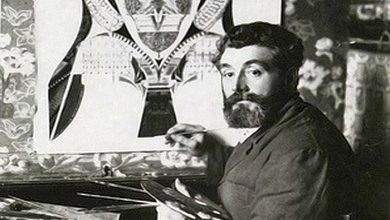What was the Paris commune? one of the largest socialist uprisings

Following the failure of the Franco-Prussian War of 1870-1871, France was confronted with one of the most massive revolutions in modern history. Paris is in shambles.
The recently established Third Republic is having difficulty forming an incumbent administration, and the citizens of Paris resent the elected leaders. In this background, France, as well as Europe, are being rocked by a massive populist rebellion. By pushing government officials out of the city, the demonstrators established their own form of administration in the shape of the Paris Commune, a popular assembly in which all citizens of the French capital had a vote in how the city was run.
How Paris Commune started
To understand the Paris Commune, one must make a trip back to 1870, on the verge of the Franco-Prussian War, which wreaked havoc on the French economy and resulted in a political change.
At the start of the war, France was an imperial monarchy, commanded by Napoleon III, the nephew of the notorious Napoleon Bonaparte. Despite the country’s relative stability, the emperor’s autocratic authority enraged republican elements.

Furthermore, the imperial government’s failure to address poverty and nepotism among the affluent made it possible for early socialist ideas like Proudhonism and Blanquism to emerge, which played a key role during the Paris Commune.
In the 1860s, relations between France and Prussia started to worsen. By 1870, France had successfully rejected the succession of a German prince to the Spanish throne, which Prussian chancellor Otto von Bismarck used as a pretext for launching a war on France on July 19, 1870.
The French army, headed by the emperor himself, surrendered at Sedan after a series of disasters, and Napoleon was kidnapped. Following this, a temporary national defense cabinet was established in Paris, which declared the establishment of a new republic and chose to continue the war against Prussia.
The French government succumbed at the end of January 1871 after a brief siege, signing an armistice and accepting the harsh peace conditions. Before leaving the city and seizing forty-three departments in eastern France, Prussian forces marched into the capital and staged a ceremonial military display. The Prussian procession humiliated the French forces stationed in the city.
Tensions in Paris had already reached a height during the short occupation. The Prussian troops wisely avoided regions of the city where there were numerous peace opponents, and they departed after just two days. In such circumstances, the first elections to the Third Republic’s legislative bodies were held on February 8, 1871.

Adolphe Thiers and the Third Republic
Only unoccupied departments voted due to the German occupation of Eastern France. Candidates were permitted to run in more than one district in order for the elected assembly to acquire credibility across France. Nonetheless, for many Socialists, anti-peace activists, and Republicans, this election promised a chance to see their views translated into policy.
France remained a rural nation despite rising industrialization and urbanization. While republicans ruled the city, the peasants and tiny enclaves remained staunchly religious and conservative, praying for the restoration of the ancient Bourbon monarchy.
As a result, monarchist forces controlled the Third Republic’s first elected legislature. The elected assembly nominated Adolphe Thiers, a moderate Republican, as President in an effort to defuse tensions with the Republicans. However, this was insufficient to restore order and create connections between the country’s two major political parties.
The monarchists aspired to reinstate the Bourbon monarchy by combining parliamentarism with a system akin to that of the United Kingdom’s Westminster. The Republicans, on the other hand, advocated for the full elimination of all kinds of hereditary authority as well as the separation of church and state immediately.
The President’s first item of business was to complete the peace accord with Germany. He agreed to the German requirements from the Assembly in Bordeaux, southern France, and ordered the total disarming of Paris as soon as the foreign troops withdrew.
On March 15, Thiers arrived at the Capitol and ordered that all canons in the city be transported back to the military barracks. While the order was carried out without much opposition in most sections of Paris, the situation on the heights of Montmartre was rather different. The National Guardsmen stationed there defied the command and opened fire on the approaching French army loyalist groups.
As the working class joined forces with the National Guard, major combat erupted across the city. Peace opponents, radical republicans, socialists, and other anti-monarchist factions joined the broader rebellion, capturing key government facilities. Adolphe Thiers, along with the rest of the administration, managed to evacuate the city and establish a formidable force of Loyalist troops in Versailles.
How did the Paris Commune begin?
The Paris Commune was established on March 26, 1871, proclaiming independence from the French Republic. Similar uprisings at Lyon, Marseilles, and other important French towns were rapidly put down by the newly rebuilt French army. Adolphe Thiers proclaimed the communards to be enemies of France and democracy on March 27.
Meanwhile, the Paris Commune’s leaders battled to construct a working government. The Paris Commune, which saw itself as a political entity administered directly by the people, was created by municipal councilors chosen by popular vote from the city’s numerous districts. They began as regular individuals, largely from the working class, who had no prior experience with government or politics.
Among the most well-known communards were Arthur Arnoux, Gustave Flournes, and Emile Victor Duval. The different branches of government were set up in such a manner that the people had direct influence over them.

The Commune of Paris also established severe secularism, transferring religious facilities to private hands and thus separating the state from the church.
In 1905, the newly restored republican government reaffirmed the division by promulgating the renowned legislation of secularism, which is still in effect today in France. The Communards established a free education system that enabled students from all socioeconomic backgrounds to attend school.
The Paris Commune was not anti-French, but they wanted the country to be decentralized to the point that each region had complete power over its own public services and military (designed to replace the army).
In principle, each Parisian district was self-governing. This style of administration lacked the time to show itself successful. Adolphe was already planning his counteroffensive soon after the elected republican administration was expelled.
Despite the signing of an armistice, the German Empire still held around 800,000 French men hostage. Before being formed in Versailles, these troops were deployed to crush disturbances in other self-proclaimed communes (Lyon, Marseille, Saint-Etienne).
Thiers launched an attack on March 21 with a force of 200,000 men at his disposal. Marshal Marie-Edm-Patrice-Maurice de Mac-Magon, a French monarchist aristocrat and a seasoned military strategist, was in charge of the operations. The Paris Commune’s armed forces were mostly made up of volunteers with little military training or experience, as well as a small number of National Guard troops.
The Communards were unable to seize any strategically important locations on the outskirts of the city. Despite amassing a force of one hundred and seventy thousand armed men and women, the Communards bungled the campaign, badly damaging their lone offensive move, the march on Versailles, which aimed to push government forces out of the famed monarchist palace.
The Siege of Paris
Adolphe’s troops launched an attack on Paris on April 11. All of the defensive forts were taken on May 13, and on May 21, regular forces began a full-scale assault on the capital’s streets. In what is now known as “the bloody week,” the Commune’s resistance was defeated in only seven days. The regular army’s onslaught was alleged to have been so savage and efficient that the city drains were clogged with blood.
The French troops used a harsh approach. Only a few people were taken prisoner, while most communists were executed on the scene. The leaders of the Paris Commune used a similar technique, enacting a “Hostage Decree” that allowed for the imprisonment of numerous suspected opponents of the revolutionary rule, including religious dignitaries. The Commune collected up prisoners and sent them before the people’s tribunals for quick judgments and executions.

How did the Paris commune end and consequences
The French troops marched through the city in a bloodbath for seven days. Countless combatants died on both sides, but the communards bore the brunt of the losses. In the ranks of the revolutionaries, there were more than 20,000 casualties.
In addition, other monuments were damaged: the Tuileries Palace, Louis XVI’s last house, was destroyed by fire on May 23. The Hôtel de Ville, another historic structure in the French capital, caught fire the following day. Following it, more than 45 thousand communists were imprisoned.
The French government handled them differently. Some were put to death, while others were deported or imprisoned. However, more than 22,000 people were saved. On the last day of the fight, over 7,000 Communards managed to evacuate from Paris, settling in England, Belgium, and Switzerland.
A partial amnesty was granted on March 3, 1879, allowing 400 deportees to return to Caledonia and 2,000 exiles to return home. A universal amnesty was given on July 11, 1880, enabling most communes to return to France.
Until 1873, Adolphe Thiers controlled France. Patrice de Mac-Mahon, a monarchist marshal, was elected President that year. Count Henri Charles d’Artois, Duke of Bordeaux, better known as Count de Chambord—the last member of the senior line of French Bourbons—led France to the brink of becoming a monarchy again during his reign, which lasted until 1879.
One of the darkest episodes in European history is the Paris Commune, and it was also a watershed moment in socialism’s history. After the Battle of Paris, Karl Marx, a German philosopher, stated that the Commune was the first experience of socialist society. The events of March-May 1871 cleared the ground for large socialist, communist, and anarchist groups to arise throughout Europe.




